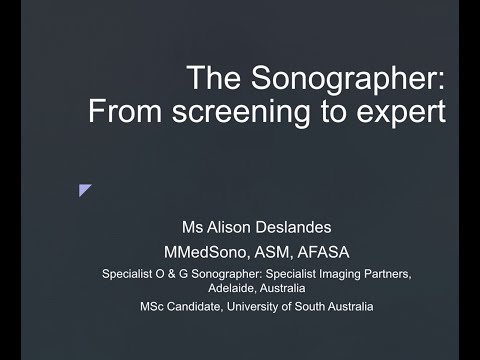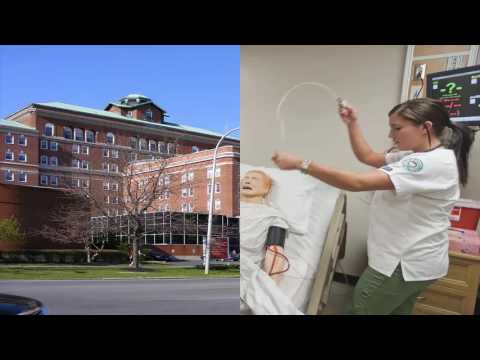How a Medical Assistant Can Make the Transition to Sonography
Contents
- Why a medical assistant may want to transition to sonography
- The necessary steps to make the transition
- The benefits of transitioning to sonography
- The challenges of transitioning to sonography
- The different types of sonography
- The skills required for sonography
- The training required for sonography
- The job outlook for sonographers
- The salary of a sonographer
- Tips for making the transition to sonography
If you’re a medical assistant who’s interested in making the transition to sonography, there are a few things you need to know. First and foremost, you’ll need to complete an accredited training program. Once you’ve done that, you’ll need to pass a national certification exam.
With the right training and certification, you can make the transition to sonography and enjoy a successful career in this growing field.
Checkout this video:
Why a medical assistant may want to transition to sonography
There are many reasons why a medical assistant may want to transition to sonography. The most common reasons are for a higher salary, increased job satisfaction, and a more flexible work schedule.
Although the median salary for a medical assistant is $33,610 per year, the median salary for a diagnostic medical sonographer is $67,530 per year. In addition, sonographers often have the opportunity to work part-time or full-time, whereas Medical assistants typically work full-time. Finally, many Medical Assistants find that they enjoy working with patients and helping them through difficult times; however, they do not enjoy working with the administrative side of the medical field.
The necessary steps to make the transition
There are a few necessary steps to take if you want to make the transition from medical assistant to sonographer. First and foremost, you’ll need to complete an accredited program in diagnostic medical sonography. Once you have your degree or certificate in hand, you’ll need to pass both the American Registry for Diagnostic Medical Sonography (ARDMS) exams. After that, you’ll need to apply for and obtain a state license (if your state requires it). Finally, you’ll need to find a job in the field of sonography.
The benefits of transitioning to sonography
There are many benefits to transitioning from a medical assistant to a sonographer. As a medical assistant, you have already had training in patient care and basic medical procedures. You are also likely to have good interpersonal skills, as you will be working closely with patients. These skills will be transferable to your new role as a sonographer.
In addition, as a sonographer you will be able to earn a higher salary and will have more opportunities for career advancement. Sonographers are in high demand, so there is also the potential to secure a job more quickly than if you were starting your career from scratch.
If you are interested in transition to sonography, there are a few things you need to do in order to make the transition successfully. First, you need to make sure that you complete an accredited sonography program. This will give you the necessary education and training to perform your duties as a sonographer effectively.
Once you have completed your sonography program, it is important to become registered with the American Registry for Diagnostic Medical Sonography (ARDMS). This is the organization that provides certification for sonographers in the United States To become registered, you must pass an examination administered by the ARDMS.
Once you have met these requirements, you will be well on your way to a successful career as a sonographer.
The challenges of transitioning to sonography
Medical assistants who are interested in transitioning to sonography face a few challenges. First, they will need to complete additional education and training in order to qualify for the role. Second, they may need to obtain certification from a professional organization in order to practice sonography. Finally, they will need to be prepared for the different work environment and culture that comes with working in a hospital or other medical setting.
The different types of sonography
Ultrasound imaging, also called sonography, uses sound waves to produce pictures of structures inside your body. The different types of sonography include:
-Fetal ultrasound. This technique is used during pregnancy to check the fetus for problems.
-Abdominal ultrasound. This technique is used to examine organs in the abdomen, such as the liver, gallbladder, spleen, pancreas and kidney.
-Breast ultrasound. This technique is used to examine problems in the breast tissue, such as a lump or an abnormal mass.
-Musculoskeletal ultrasound. This technique is used to examine tendons, muscles and joints throughout the body.
The skills required for sonography
Medical assistants looking to enter the sonography field may find the transition fairly easy since they likely have many of the required skills. These skills include:
– Strong communication: Medical assistants must be able to communicate clearly with patients and families, as well as with other members of the healthcare team.
– Customer service: Providing excellent customer service is essential in all healthcare settings.
– Technical skills: Medical assistants must be comfortable using computers and other technology in order to perform their duties.
– Interpersonal skills: Medical assistants must be able to build rapport with patients and families, as well as work well with other members of the healthcare team.
– Organizational skills: Medical assistants must be able to keep track of patient records and schedule appointments.
The training required for sonography
Getting the training required to work in sonography can be a challenge for medical assistants. Many community colleges and technical schools offer certification programs, but they may not be able to offer the specific courses required. There are a few ways to get the training you need to make the transition to sonography.
The first way is to take courses online. There are many online courses that will provide you with the necessary education for a career in sonography. These courses typically last between four and six weeks and are offered by accredited institutions.
Another way to get the training you need is to enroll in a trade school that specializes in sonography. These schools typically offer two-year programs that will provide you with the knowledge and skills you need to be successful in this field.
Finally, you can also consider takingclasses at a local community college or university. Many of these institutions offer night and weekend classes that can accommodate your schedule. While you may not be able to get all of the coursework required for certification, you can still get a solid foundation in sonography by taking these classes.
The job outlook for sonographers
The job outlook for sonographers is excellent. The demand for diagnostic medical sonographers is expected to grow by 44% from 2016 to 2026, much faster than the average for all occupations according to the U.S. Bureau of Labor Statistics. This growth is due in large part to the aging baby-boomer population, who will need diagnostic procedures such as ultrasound as they age.
The salary of a sonographer
In addition to the satisfaction of helping others and working in a challenging and rewarding field, sonographers can also earn a very competitive salary. The median annual salary for sonographers is $74,000, and the top 10% earn more than $97,000 per year. With experience and specialized training, sonographers can easily earn six-figure salaries.
Tips for making the transition to sonography
Medical assistants play a vital role in the medical field, but they may be interested in transitioning to sonography. If you’re a medical assistant who is considering this career change, here are some tips to help you make the transition:
1. Get experience. If you’re interested in sonography, try to get experience in the field. You may be able to volunteer or shadow a sonographer at a local hospital or clinic. This experience will give you a better idea of what the job entails and whether it’s something you’d like to pursue.
2. Take classes. If you want to transition to sonography, you’ll need to complete additional training. There are many community colleges and technical schools that offer programs in diagnostic medical sonography. These programs typically take two years to complete and include classroom and lab work, as well as clinical rotations.
3. Seek out opportunities. Once you’ve completed your training, look for opportunities to gain experience in the field. Many hospitals and clinics offer externship programs for new sonographers. Externships provide hands-on training and can give you an idea of what it’s like to work in a particular setting.
4. Stay current on new technologies. As a sonographer, you’ll need to keep up with new technologies and advances in the field in order to provide the best care for your patients







